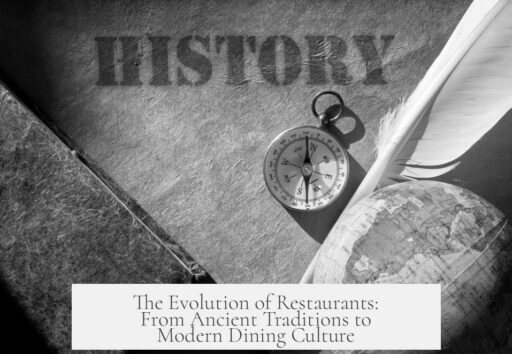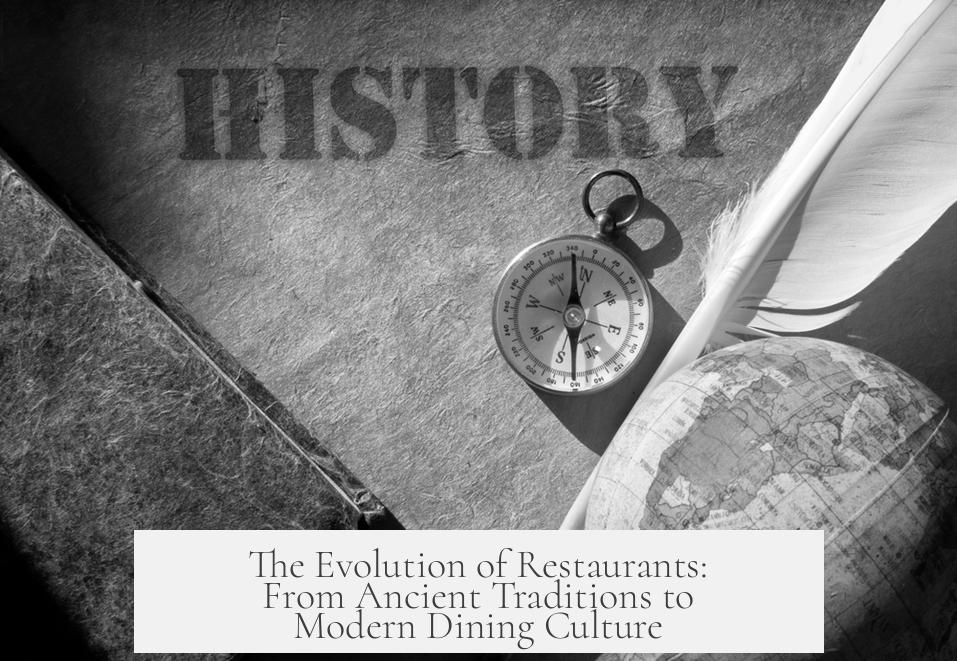Restaurants trace their origins to ancient civilizations where communal eating and food service began, evolving through centuries into the universal social norm experienced worldwide today.
The concept of eating out exists as far back as ancient times. In 12th century China, during the Song dynasty, establishments functioned much like modern restaurants. They featured menus, fixed prices, reservations, professional cooks, and individual service at tables. Specialized venues offered unique hot or iced dishes and celebrated regional cuisines. Two notable examples are Bianyifang, a Peking Duck restaurant established in 1416 and Ma Yu Ching’s Bucket Chicken House from 1153 in Kaifeng, reputedly one of the world’s oldest continuous restaurants.
Going even further back, around 4000 BC in ancient Sumer, houses run by women brewers served beer and possibly bread, functioning as social gathering places with food and drink. This shows early forms of food service for social needs.
Ancient Rome introduced more direct predecessors of the modern restaurant. Urban citizens, especially the working classes and travelers, frequently ate at thermopolia—public eateries serving hot food and drinks. Pompeii reveals numerous thermopolia with counters featuring built-in bowls, suggesting eating directly from the establishment’s fixtures. These dining spots were often the main source of meals since most people lacked kitchens at home. Historical evidence notes roughly 150 such food stalls in Pompeii alone, indicating the demand for public food service.
Medieval Europe continued evolving communal eating spaces through inns and taverns. These establishments originally served travelers needing lodging and meals. Inns competed by offering better food, and some monasteries offered meals to pilgrims. These food-serving places became social hubs where locals and travelers gathered, laying groundwork for restaurants.
The modern concept of a restaurant began in mid-18th century France. A Parisian entrepreneur, A. Boulanger, opened a business in 1765 selling restorative soups or “restaurants.” This term gave rise to the word “restaurant” in many European languages. The French Revolution accelerated this evolution. Displaced aristocratic chefs opened dining establishments for the public. These restaurants provided refined cuisine and a dining experience that mimicked aristocratic dinner parties. As wealth grew and urban populations expanded, restaurants flourished, catering to the middle classes aspiring to emulate the elite.
Following this, restaurant culture expanded across Europe. Germany popularized beer gardens and inns, Italy developed trattorias and osterias offering regional specialties, and England cultivated coffee houses and pubs. The 19th century saw the rise of American restaurants, with New York’s Delmonico’s opening in 1827 as a pioneer fine dining venue. Rapid urbanization and industrialization increased demand, reshaping restaurants from simple inns to diverse eateries catering to working and middle classes.
The Industrial Revolution played a vital role by creating urban populations dependent on dining out. More people moved to cities, requiring convenient food options. This period also birthed fast food and takeout cultures, with many iconic chains emerging post-World War II, emphasizing convenience and affordability.
Later, globalization broadened restaurant diversity. Migration and cultural exchange birthed fusion cuisines and ethnic restaurants, allowing consumers worldwide to experience different flavors easily. New formats like food trucks and pop-up eateries challenged traditional models.
The digital age transformed dining with online reservations and food delivery platforms, such as Uber Eats, revolutionizing access and convenience. Social media further enhanced marketing, enabling restaurants to engage directly with customers and showcase their offerings globally.
The restaurant concept itself evolved significantly. Initially focused on soups and broths, dining offerings became more elaborate throughout the 19th century, emphasizing presentation and atmosphere. Today, various formats coexist: fine dining, casual restaurants, fast food, cafés, buffets, and mobile vendors, each fulfilling specific consumer needs.
| Era | Key Developments | Notable Examples |
|---|---|---|
| Ancient China (12th c.) | Menus, fixed prices, regional cuisines, table service | Bianyifang, Ma Yu Ching’s Bucket Chicken House |
| Ancient Rome | Thermopolia serving hot food; popular among urban poor and travelers | Pompeii food stalls |
| Medieval Europe | Inns, taverns, monasteries serving travelers and locals | Medieval inns and taverns |
| 18th Century France | First modern restaurants; post-Revolution chef-owned eateries | A. Boulanger’s soup restaurant |
| 19th Century America & Europe | Urbanization drives restaurant demand; rise of fine dining and fast food | Delmonico’s (NY), Fred Harvey chains |
| 20th Century – Present | Globalization, digital tech, social media, varied formats | Fast food chains, online delivery apps, fusion cuisines |
The universal popularity of restaurants owes to several factors:
- Urbanization created a mobile population needing convenient meals.
- Economic stability and wage systems enabled spending on dining out.
- The aspiration for social and culinary experiences fueled higher demand.
- Technological advances and globalization expanded access and variety.
In summary, restaurants grew from ancient communal eateries to complex institutions shaped by economic, social, and cultural forces. They became widespread as societies urbanized and wealth distribution supported eating outside the home. Continuous innovations keep evolving restaurant culture today.
- Ancient civilizations established early public food services.
- Medieval inns and taverns served travelers and locals.
- Modern restaurants originated in 18th century France.
- Industrialization and urbanization expanded restaurant demand.
- Technological advances and globalization diversified dining options.
- Restaurants remain dynamic social spaces worldwide.




